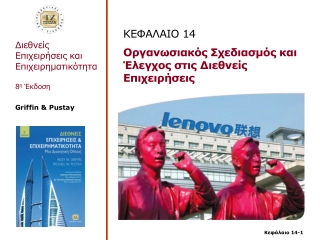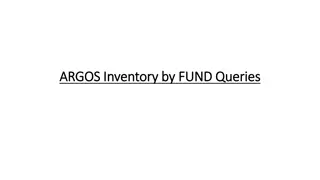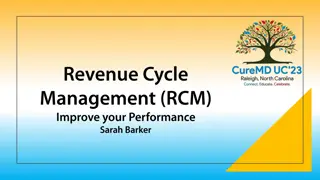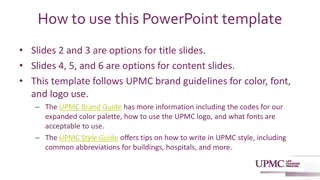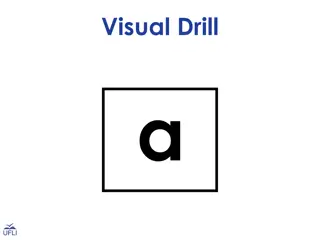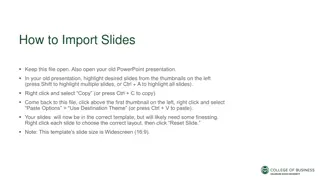
Efficient DRAM Caching for Hybrid Memory Systems
Discover how TicToc enables bandwidth-efficient DRAM caching in hybrid memory systems to address the challenges posed by increasing memory bandwidth and capacity demands. Explore the use of emerging memory technologies, such as 3D-DRAM and 3D-XPoint, as well as the benefits of utilizing DRAM as a cache to improve memory performance without necessitating OS or software changes.
Download Presentation

Please find below an Image/Link to download the presentation.
The content on the website is provided AS IS for your information and personal use only. It may not be sold, licensed, or shared on other websites without obtaining consent from the author. If you encounter any issues during the download, it is possible that the publisher has removed the file from their server.
You are allowed to download the files provided on this website for personal or commercial use, subject to the condition that they are used lawfully. All files are the property of their respective owners.
The content on the website is provided AS IS for your information and personal use only. It may not be sold, licensed, or shared on other websites without obtaining consent from the author.
E N D
Presentation Transcript
TicToc: Enabling Bandwidth-Efficient DRAM Caching for Hybrid Memory Systems Vinson Young Zeshan Chishti Moinuddin Qureshi 1
MOORES LAW HITS MEMORY WALL Capacity demand Channel On-Chip Bandwidth demand Need solutions for increased memory bandwidth and capacity 2
EMERGING MEMORY TECHNOLOGIES DRAM 3D-DRAM 3D-XPoint(NVM) Memory Bandwidth low high Memory Capacity small large Emerging memory technologies offer bandwidth/capacity tradeoffs 3
DRAM AS A CACHE fast CPU L1$ L2$ CPU L1$ Memory Hierarchy L2$ L3$ DRAM-Cache (3D-DRAM / DRAM) System Memory (DRAM / NVM) MCDRAM from Intel Optane DC from Intel HBCC from AMD slow OS-visible Space Using DRAM as a DRAM-cache, can improve memory bandwidth and capacity (and avoid OS/software change) 4
SETUP: SHARED-CHANNEL DRAM CACHE FOR 3D-XPOINT Bandwidth for DRAM Cache Maintenance (e.g., miss probe) CPU Chip CPU Chip Cache + Memory Controller Memory Controller DRAM Cache Controller BW lost due to cache maintenance not necessarily impactful Cache maintenance now Channel sharing = Better pin utilization! consumes channel BW, can hurt DDR4 HBM DDR4 3D-DRAM DRAM DRAM 3D-XPoint (a) 3D-DRAM Cache for DRAM (b) DRAM Cache for 3D-XPoint DRAM cache maintenance now steals memory bandwidth. All cache bandwidth costs important 5
CHALLENGE: DRAM CACHE MAINTENANCE BANDWIDTH Tag-Inside-Cacheline (TIC) Hit path DRAM R Data Miss path DRAM R Miss probe 3D-XPoint R Data DRAM W Cache Install Poor data reuse can waste 66% channel bandwidth Useful = cache hit, cache writeback, mem read, mem write Current TIC/Alloy/KNL DRAM cache design can waste channel bandwidth, need to improve BW 6
BACKGROUND: OPTIONS FOR DRAM CACHE TAGS Approach 1: Tag-Inside-Cacheline (Alloy Cache) T Data T Data T Data T Data Hit: 1 access Miss: 1 access Approach 2: Tag-Outside-Cacheline (Timber Cache) SRAM Tag Cache (32KB) Data Data Data Data T TT T T TT T T TT T T TT T TT T T TT T TT T T TT T TT T T TT T T T T Hit: 2 accesses Miss: 1 access Fetch on TC miss Hit: 1+ accesses Miss: accesses = Probability of Tag-Cache Miss TIC has good hits, TOC has good misses. Use TIC for hit, TOC for miss, for best of both? * Writeback, Install, Dirty-evict probe to be discussed later 7
INITIAL PROPOSAL: DUAL TAGS WITH TICTOC Hit/Miss Pred Pred Hit, Use TIC Pred-hit, actual-hit: 1 access Pred-hit, actual-miss: 1 access (rare) Pred Miss, Use TOC Tag Cache T TT T TT T TT T TT T Data T Data T Data T Data T TT T T TT T Pred-miss, actual-hit: 1+ accesses (rare) Pred-miss, actual-miss: accesses Common case is using TIC for hits, TOC for misses. Saves both hit and miss bandwidth 8
INITIAL PROPOSAL: TICTOC PERFORMANCE TOC TicToc SRAM Tags 1.6 1.4 Speedup w.r.t TIC 1.2 TIC 1 0.8 0.6 0.4 0.2 0 Combining TIC and TOC is worse than TIC individually, why? *System assumes 4GB DRAM Cache and 3D-XPoint-based main memory, sharing channels. 9
PROBLEM: CHANNEL BANDWIDTH CONSUMPTION Tag-Inside-Cacheline (TIC) (KBs SRAM) Good Hit Hit path DRAM R Data Poor Miss Miss path DRAM R Miss probe DRAM W Data 3D-XPoint R Data DRAM W Cache Install Good WB Writeback path Tag-Outside-Cacheline (TOC) (KBs SRAM) Poor Hit R TagFetch Hit path DRAM R Data Good Miss Miss path 3D-XPoint R Data DRAM W Data DRAM W Install R TagFetch R TagFetch Writeback path Poor WB TicToc (KBs SRAM) Good Hit Hit path DRAM R Data Good Miss Miss path 3D-XPoint R Data DRAM W Data DRAM W Install R TagFetch R TagFetch Writeback path Poor WB 10
PROBLEM: HIGH TOC DIRTY-BIT UPDATES Tag-Inside-Cacheline BW Consumption TicToc BW Consumption TicToc has reduced miss BW, but higher TOC dirty-bit update BW 11
MAIN CONTRIBUTION: INEXPENSIVE DIRTY-BIT TRACKING Dirty-bit maintenance has poor spatial locality and costs substantial bandwidth to maintain. Goal: Enable effective dirty-bit tracking to make a bandwidth-efficient DRAM cache. 12
PROPOSAL 1: REDUCING REPEATED TOC DIRTY-BIT CHECKS WITH DRAM CACHE DIRTINESS BIT Example (100 writes):100 Data,100 TOC-dirty-check,1 dirty-update Desired: Know L4 dirty-status to avoid TOC dirty-bit check 100 Data,1 TOC-dirty-check,1 TOC-dirty-update = 102! L4 DRAM- Cache Clean->Dirty transition L4 DRAM- Cache TOC check necessary only for Dirty A Clean A Mechanism: Remember L4 dirty information alongside L3 line! Store DRAM-Cache Dirtiness (DCD) bit alongside L3 lines. Set on read of dirty line from DRAM Cache. Check&Update TOC dirty-bit only when L4-line clean L4 dirty DCD bit ensures that repeated writebacks do not need to check TOC dirty-bit 13
PROPOSAL 2A: REDUCING INITIAL TOC DIRTY-BIT UPDATE WITH PREEMPTIVE DIRTY MARKING = (TOC Dirty-bit | TIC Dirty-bit). C is clean, D is dirty = access D|D (a) Write Path (b) Miss + Install Path Miss/WB Probe Mem Read TOC Metadata Maintenance Writeback Install Install TIC TIC |C |D |C Cache W Mem R Meta R Meta W TOC TOC C| . D| . Cache W Mem R Meta R Meta W TicToc TicToc C|C D|D Cache W Mem R Marking lines dirty at install coalesces tag&dirty update reduce BW for dirty Need dynamic solution! TicToc (+PDM) Read in preparation for dirty eviction TicToc (+PDM) Cache W D|C D|D D|C Mem R Predicted-Dirty Marking clean lines as TOC-dirty increases miss BW Preemptive dirty marking 1. improves dirty-bit update cost for written lines, but 2. degrades miss cost for unwritten lines. Ideally, should use PDM only for likely-to-be-written lines 14
PROPOSAL 2B: PC-BASED DIRTY PREDICTION Inspired by Signature-based Hit Predictor (SHiP/SHiP++). Use Install-PC as Sig Install-PC + Written-To At Install, predict likely-to-write: 1. Index Ctr-table with PC 2. Predict write behavior with PC 3. If predict write, mark TOC dirty-bit and DCD PC-indexed Counter Table SRAM Counter Table (~1KB storage) DRAM Cache (a) Observe write behavior for PCs (b) Learn PCs corresponding to write (c) Predict write behavior based on PC PC-based write predictor learns which PC s install likely-to-write lines. Good prediction enables saving both miss bandwidth and dirty-bit update. C. Wu, A. Jaleel, W. Hasenplaugh, M. Martonosi, S. Steely, J. Emer, SHiP, in MICRO 11. V. Young, A. Jaleel, C. Chou, M. Qureshi, SHiP++, in CRC-2 in ISCA 17. 15
RESULTS: DIRTY MISCLASSIFICATION RATE PDirty,ADirty PClean,ADirty PClean,AClean PDirty,AClean 100 Prediction Breakdown (%) 80 60 40 20 0 PClean,ADirty PDirty,AClean 100 Misclassification Ratio (%) 80 60 40 20 0 Low misclassification rate (~10% ratio) ensures low miss-probe and low dirty-bit update BW cost 16
RESULTS: TICTOC SPEEDUP DRAM-Cache Dirtiness reduces dirty-bit update cost for repeated writes Preemptive Dirty Marking reduces dirty-bit update cost for write-once lines TOC TicToc TicToc + DCD TicToc + PDM SRAM Tags 1.6 1.4 Speedup w.r.t. TIC 1.2 1 0.8 0.6 0.4 0.2 0 TicToc (34KB SRAM) eliminates most bandwidth spent for Tag- Maintenance, to enable speedup near SRAM Tag approach (~20MB) *System assumes 4GB DRAM Cache and 3D-XPoint-based main memory, sharing channels. 17
RESULTS: TICTOC BANDWIDTH BREAKDOWN TIC Baseline: (suffers from miss probe) TicToc with DCD+PDM: (reduces miss probe and tag maintenance) TicToc tag organization eliminates most tag-maintenance BW. Now, install bandwidth significant. 18
REDUCING INSTALL BW WITH WRITE-AWARE BYPASS = Preemptive Write-Allocate Always-Install (reduce 3D-XPoint writes) Write Miss Pred-Dirty Write- Predictor 90%-Bypass (save install/tag BW) Read Miss Pred-Clean And, proactively installing likely-dirty lines coalesces more metadata updates Preferentially bypass clean lines to save install bandwidth 19
PUTTING IT ALL TOGETHER: CACHE BW REDUCTION TIC Baseline: (suffers from miss probe, suffers from install BW) + TicToc: (reduces miss probe, suffers from install BW) + Write-Aware Bypassing: (reduces install BW) Combination of approaches increases fraction of useful BW to 90%! 20
WRITE-AWARE BYPASS PERFORMANCE 90%-bypass reduces install bandwidth, but increases writes to 3D-XPoint (bad) Preemptive Write-Allocate reduces installs, and retains write buffering ability No DRAM Cache TicToc + 90%-Bypass + Write-Allocate + Preemptive Write-Allocate 2.25 2.00 1.75 Speedup w.r.t TIC 1.50 1.25 1.00 0.75 0.50 0.25 Write-Aware Bypass reduces install bandwidth without sacrificing write buffering capabilities, for 25% speedup *System assumes 4GB DRAM Cache and 3D-XPoint-based main memory, sharing channels. 21
HARDWARE COST TicToc Component TicToc Component SRAM Storage SRAM Storage Paper Paper Hit-Miss Predictor Hit-Miss Predictor 1 KB 1 KB Alloy Cache Alloy Cache DRAM Cache Presence DRAM Cache Presence 1 bit / L3-line 1 bit / L3-line BEAR BEAR 32 KB 32 KB TIMBER / Sim TIMBER / Sim Metadata Cache Metadata Cache DRAM Cache Dirtiness 1 bit / L3-line This work Signature-based Write Predictor 1 KB This work TicToc Total 34KB + 2 bits / L3-line TicToc achieves its benefits with minimal hardware requirements 22
THANK YOU TicToc solves hit and miss bandwidth. DRAM Cache Dirtiness + Preemptive Dirty Marking solves dirty-bit tracking bandwidth. Write-aware bypass solves install bandwidth. TicToc enables a cheap (low SRAM cost ~32KB), high-performance (>90% utilization of bus bandwidth) DRAM cache for heterogeneous memories. 23
METHODOLOGY (1/8TH KNIGHTS LANDING) CPU (8 cores) 3D-XPoint NVM DRAM DRAM 2GB 3D-XPoint 64GB DDR 2.0GHz, 64-bit 1 channel, shared 16 GBps, shared 13~96R~320W ns Capacity Bus Channels Bandwidth Latency DDR 2.0GHz, 64-bit 1 channel, shared 16 GBps, shared 13~30 ns 25

